The second of three photo posts showing the beauty of Jiuzhaigou National Park in Sichuan Province, China. Jiuzhaigou is divided into three valleys, Shuzheng is the entrance, which branches into Rize and Zechawa.

Nuorilang Falls
These waterfalls are 320m wide and 20m high, making them the widest highland waterfall in China, and one of the symbols of Jiuzhaigou park. In Tibetan, Nuorilang means “grand and magnificent”.
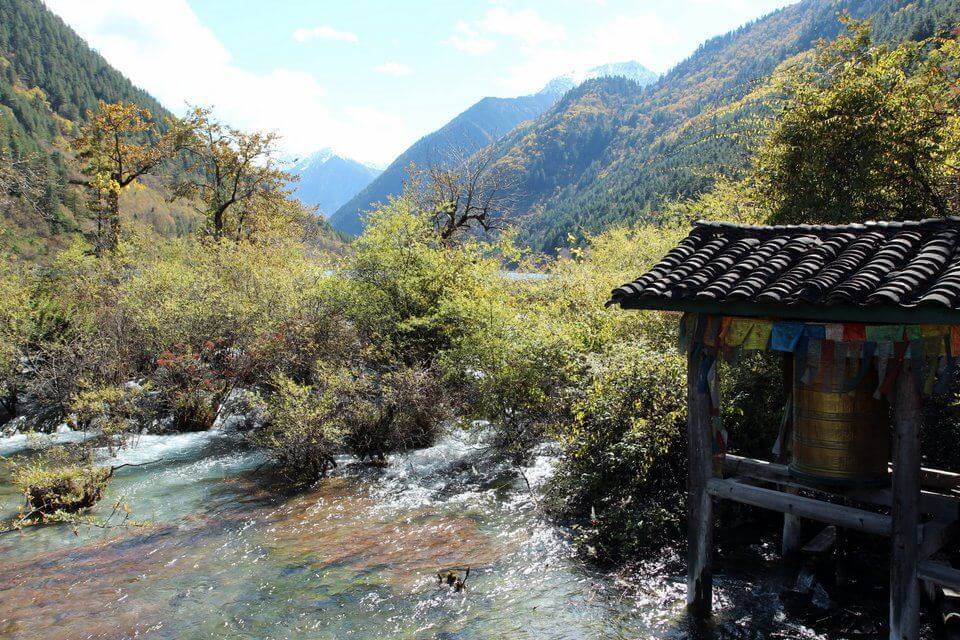
Prayer Wheel at Bonsai Shoals
The Tibetan prayer wheels are driven by the water so turn constantly, and appear all along the lower shorelines.
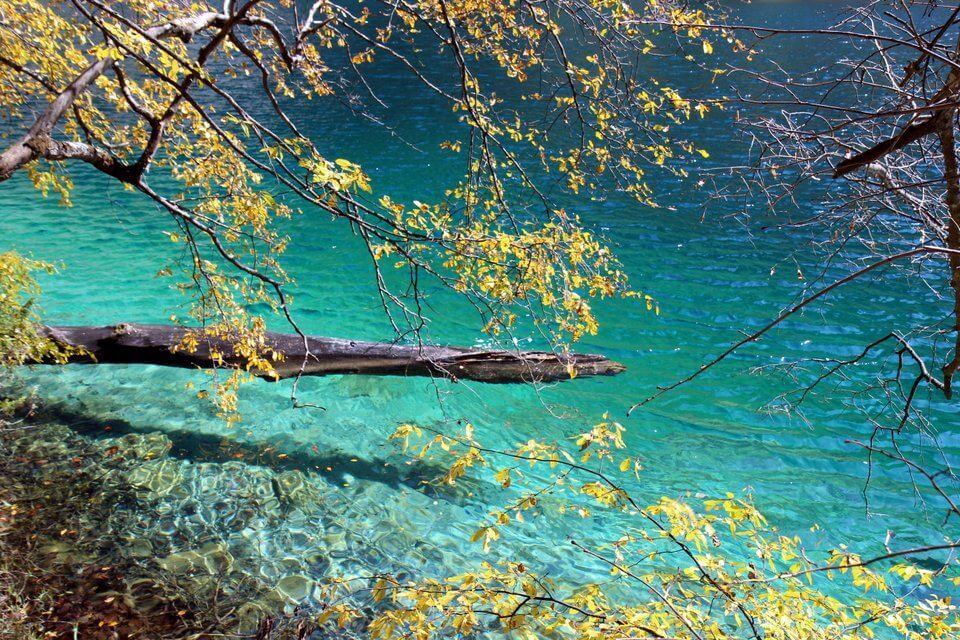
Tiger Lake – the log is floating on the water, but looks like it’s hovering
There are three stories behind the name Tiger Lake. One is that the reflections of the autumn forests look like tiger stripes on the lake, another is that the roaring of the Shuzheng waterfall sounds like a tiger, and the third is that tigers like to drink at the lake. We were there in autumn and would have to agree with the second option.
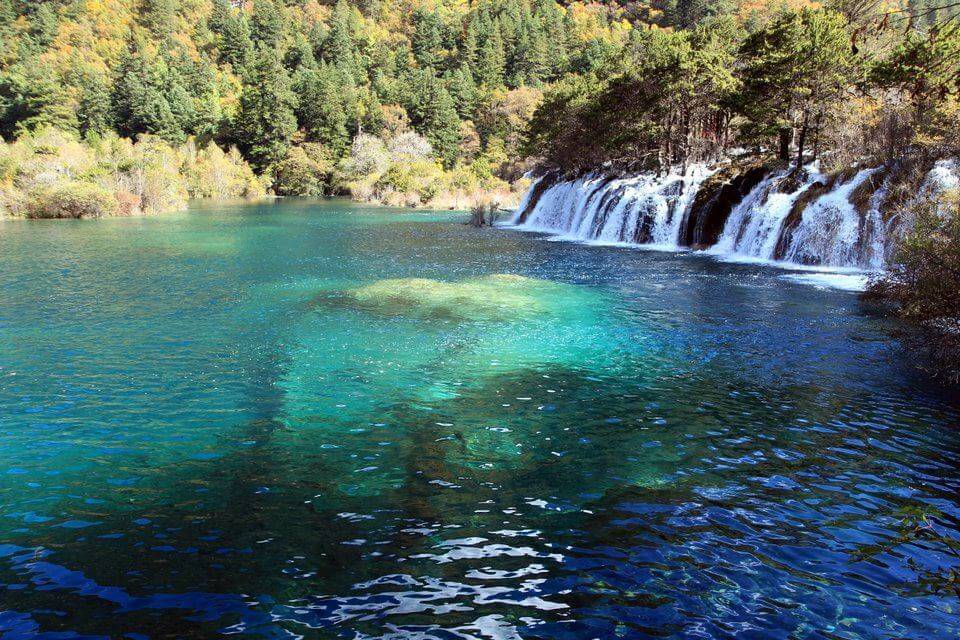
Shuzheng Lakes
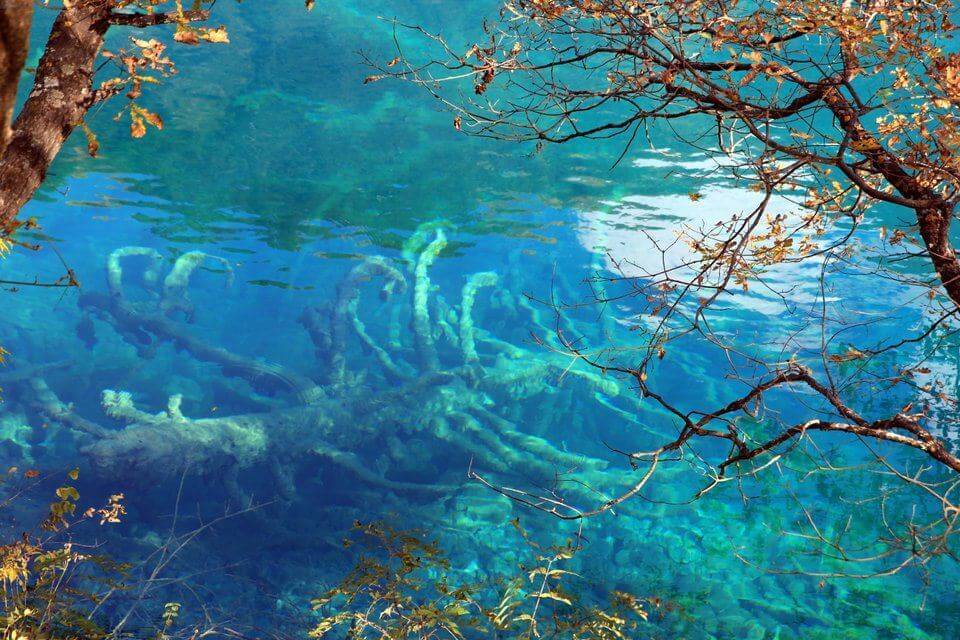
Shuzheng Lakes Fallen Tree
The high mineral levels of the lakes not only give them their colours, but form calcium deposits on the fallen trees, preserving them under the water.
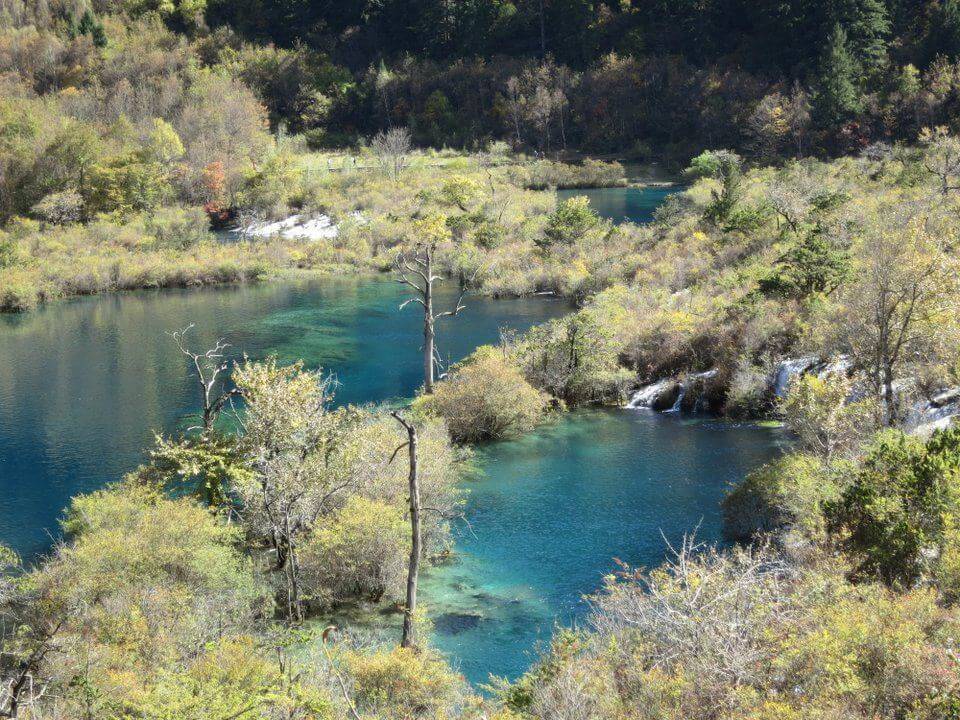
Sparkling Lake – note the dragon lying in the middle lake
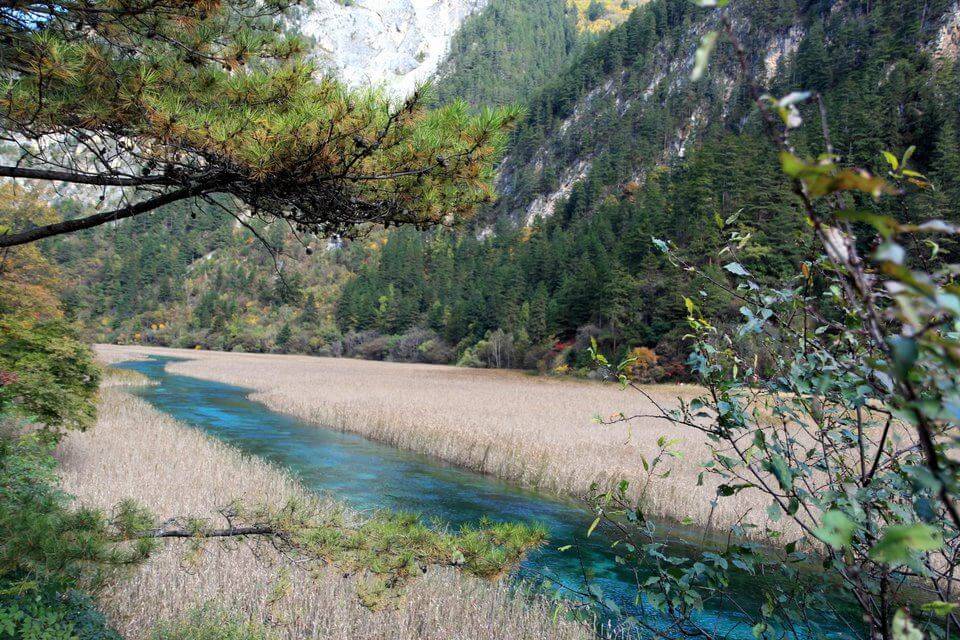
Reed Lake
The walk back to the entrance runs alongside the 1375m long Reed Lake. The zig-zagging bright turquoise river is also known as the Jade Ribbon.
More about Jiuzhaigou
Be sure to check out the other two posts in the the series covering Zechawa Valley and Rize Valley. The final post will be full of visitor tips for Jiuzhaigou, showing the reality of visiting this crowded tourist hotspot.
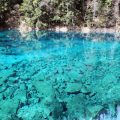

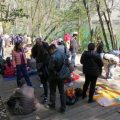

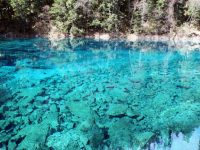
Pingback: Steve Juba (@solotravelclubs)
Pingback: Steve Whitty (@stevo120665)
Pingback: Maria (@acceleratedstal)
Pingback: @saporedicina
I’m definitely putting Jiuzhaigou on my bucket list.